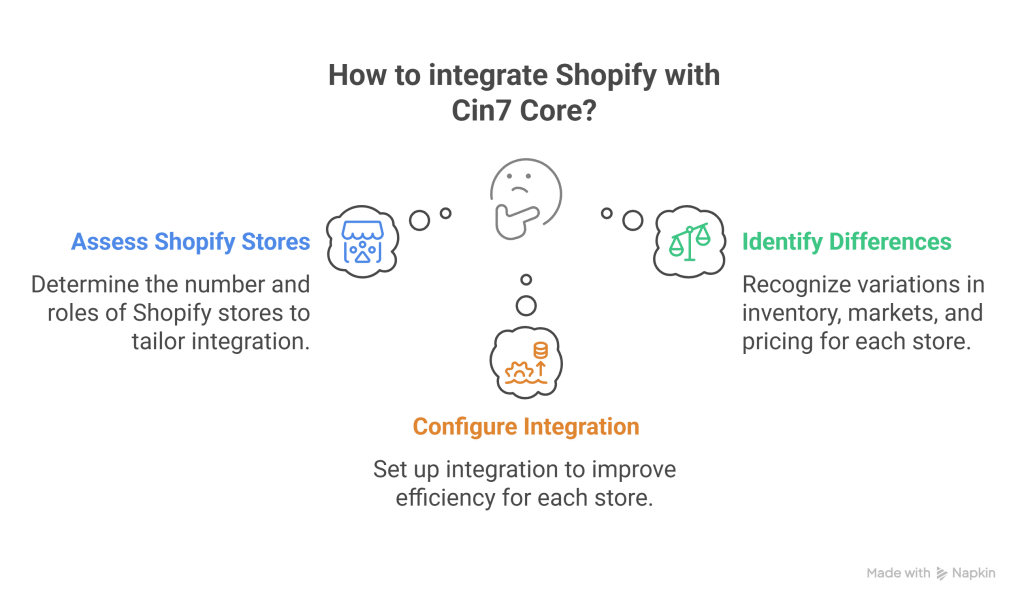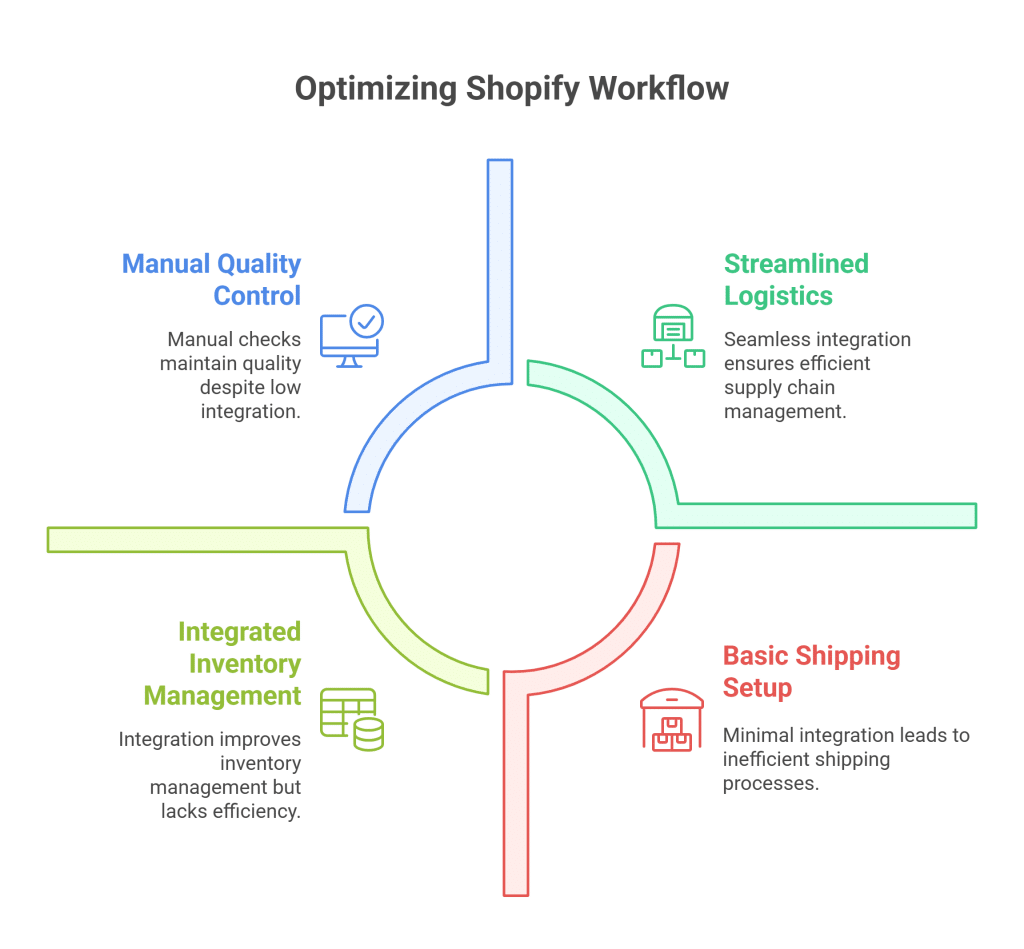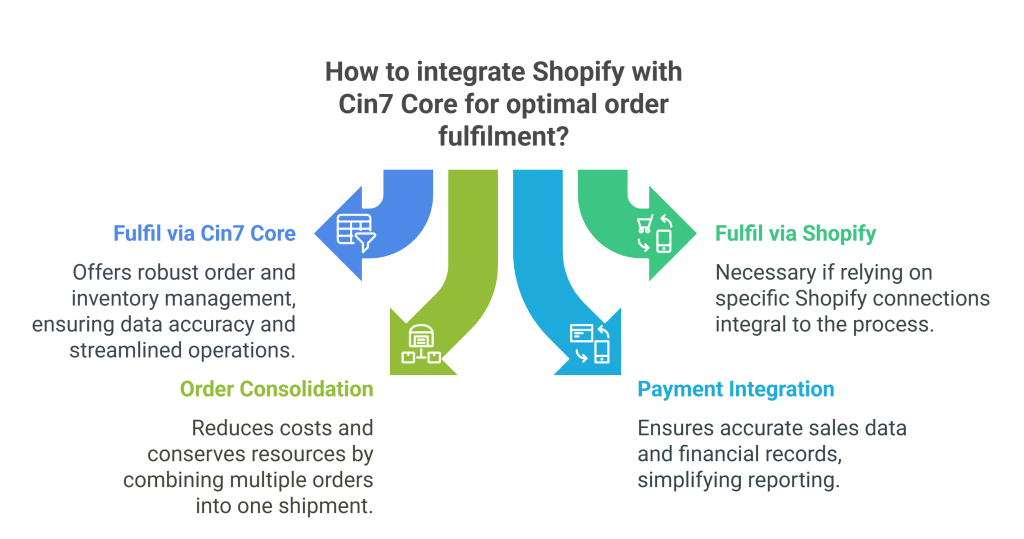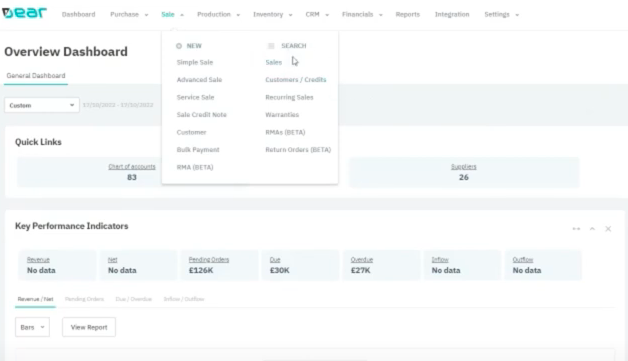Do you sell several different products online via Shopify? If so, your e-commerce business could use some advanced inventory or order management tools to track your products and sales more efficiently.
Integrating Cin7 Core with Shopify will allow you to connect your e-commerce store to a cloud-based inventory management tool to quickly and easily manage your inventory stock across multiple categories and channels. Any e-commerce business owner using Shopify can benefit immensely from this integration.
What are the key considerations when integrating Cin7 Core with Shopify?
The key considerations include ensuring smooth synchronisation between your sales channels, reducing repetitive tasks, and keeping inventory and order data accurate across platforms. By carefully planning the integration, you can achieve better productivity, efficiency, and customer satisfaction.
The result of the synchronisation is better productivity, operational efficiency, and customer satisfaction for your e-commerce business. Your customers will see their orders processed and fulfilled faster, while product availability instantly updates for all other potential customers on your store website.
In this blog, we’ll discuss key questions to ask when setting up this integration, ensuring a seamless connection between your e-commerce platform and inventory management system.
Understanding the Scope and Purpose
Understanding the scope and purpose is important because assessing the number and type of Shopify stores you’re integrating ensures the setup matches your unique markets, customer segments, and product lines, allowing the configuration to support your business strategies.
For example, if you own a clothing Shopify store and a computer Shopify store, there will be differences in inventory, target markets, target customers, orders, and pricing structures. You must identify these differences to properly configure the integration to improve the efficiency of running each store.

Inventory Visibility
Inventory visibility is important because showing real-time stock values on Shopify directly impacts customer trust and reduces the risk of overselling. By configuring Cin7 Core to reflect accurate stock levels, you not only improve customer satisfaction but also make smarter decisions about when to reorder products and avoid keeping excess unsold stock.
Inventory visibility is critical for promoting customer satisfaction because your customers won’t end up purchasing a product that is really unavailable. Besides, you can prevent products from running low in your inventory by submitting a new order to your supplier before you run out.
Single Source of Truth
Determine which system, Shopify, or Cin7 Core, will serve as the single source of truth for pricing and product information. This decision affects how data is managed and maintained across your sales channels.
In other words, choose a platform that will be your primary place to manage your data. Once you update the data on this platform, it will automatically synchronise on the other platform without you needing to update it manually there.
Choosing a single source of truth will reduce the number of repetitive and administrative processes, improving your organisation’s efficiency.
SKU Consistency
SKU consistency is essential because mismatched SKUs across Shopify and Cin7 Core can cause inventory errors, delayed fulfilment, and unhappy customers. Keeping SKUs consistent ensures that both platforms communicate accurately, which streamlines stock management and improves order accuracy.
You would be amazed at how many e-commerce businesses mismanage their inventory across multiple sales channels due to mismatched or incorrect SKUs. Integrating Cin7 Core with Shopify will reduce the number of inventory errors like this by ensuring SKU consistency across both platforms and all sales channels.
Regional Considerations
Your trading regions influence tax rates, shipping rules, and inventory allocation. By configuring Cin7 Core accordingly, you can automate these elements, saving time and reducing the scope for error.
For example, tax regulations differ across various regions of the country. So, what you can do is use Cin7 Core to create specific region-based tax rules to remain in compliance whenever you generate sales in each region. As for shipping rules, you can set them based on the carriers, services, and pricing available in those different regions.
The result is improved customer satisfaction due to better delivery efficiency for your customers.
Quality Control
Consider if you need to review product listings before they go live on Shopify. This workflow step can prevent errors and ensure brand consistency across your online presence.
Reviewing Shopify product listings involves using Cin7 Core to scan through the product titles, descriptions, prices, quantities, keywords, images, and shipping details to verify that all the information is correct. If any changes need to be made to these listings, they will update across all your sales channels to uphold brand consistency and integrity everywhere.

Multi-location Shipping
Does your e-commerce business ship products from multiple locations? If so, Finally, it requires careful setup in Cin7 Core to manage stock levels and order routing effectively. The platform lets you create a separate list of inventories for each regional warehouse where you store your products for fulfillment purposes.
Mapping out these locations and synchronising the data with your Shopify stores will increase the likelihood of fulfilling orders for customers in each region without the risk of running out.
Logistics Partnerships
If you’re using a third-party logistics provider (3PL), your workflow must reflect the integration points and data exchange processes between Shopify, Cin7 Core, and the 3PL’s systems.
Ensuring order fulfilment depends on fast and accurate data synchronisation between your third-party logistics providers and your Shopify and Cin7 Core platforms. The integration will streamline the data synchronisation so that your logistics partners can more efficiently manage the supply chain for your business.
Existing Connections
Examine any existing systems integrated with Shopify. The new integration mustn’t disrupt these connections and should ideally enhance the overall ecosystem of your business software.
For instance, you may have already connected other apps to your Shopify store, such as Amazon, eBay, Walmart, and Etsy. So, if you integrate your Cin7 Core with your Shopify store, you must ensure that your Cin7 Core data will synchronise across all those existing connections to your Shopify store. If you see any potential issues with these connections, consider ways to improvement the data alignment between the platforms and those connections.
Order Fulfilment Choices
The best way is to use Cin7 Core as your main order fulfilment platform, since it offers advanced order and inventory management tools. This approach ensures greater efficiency and more accurate synchronisation across channels. Only if you rely on special Shopify integrations should you consider fulfilling orders through Shopify directly.
It would be better to fulfil orders via Cin7 Core, which has order and inventory management tools designed to improve efficiency and data synchronisation accuracy across your platforms and sales channels. The only exception is if you use specific Shopify connections integral to your order fulfilment process. Otherwise, stick with Cin7 Core for your order fulfilment needs.
Order Consolidation
Order consolidation is a common logistics practice where you combine multiple orders into one shipment. For instance, if a customer places multiple orders at the same time, it is more cost-efficient to combine those orders into one shipment to save time, money, and resources.
If you need to consolidate orders from Shopify to Cin7 Core, ensure that both workflow processes and system configurations support this. It’s about having a clear and efficient path from sale to invoice.

Payment Integration
You should choose payment providers that integrate seamlessly with Cin7 Core so that every transaction is properly recorded and reconciled. This ensures your sales, financial data, and reporting stay accurate while avoiding gaps or manual fixes in your accounting processes.
In conclusion, integrating Shopify with Cin7 Core can significantly enhance your operational efficiency, but it requires careful planning and configuration. By asking these questions, you can ensure a robust integration that supports your business’s growth and delivers a seamless experience for your customers. Keep these considerations in mind, and you’ll be well on your way to a successful Shopify-Cin7 Core partnership.
Need Assistance
Bluehub is a digital supply chain consultancy company with dedicated professionals who can assist you with integrating CIN7 Core with your Shopify store. Call 0800 669 6457 for more information.
Cin7 Core and Shopify Integration: Frequently Asked Questions
1. What are the benefits of integrating Cin7 Core with Shopify?
Integrating Cin7 Core with Shopify helps you sync inventory and order data across both platforms in real-time. It improves accuracy, reduces manual work, and enhances customer satisfaction by keeping stock levels updated and streamlining fulfilment.
2. Should I use Cin7 Core or Shopify as the single source of truth for product data?
You’ll need to choose one platform—either Cin7 Core or Shopify as your primary source of product and pricing data. This decision ensures smooth data sync and avoids duplication or manual updates across channels.
3. Why is SKU consistency important when connecting Shopify to Cin7 Core?
Matching SKUs across Shopify and Cin7 Core is critical for accurate inventory tracking and order fulfilment. If SKUs don’t align perfectly, you may experience inventory errors and failed order processing across your sales channels.
4. Can I manage multiple Shopify stores with Cin7 Core?
Yes, you can integrate multiple Shopify stores with Cin7 Core. It’s important to configure each store based on its inventory, target market, and pricing strategy to ensure the integration supports your business structure.
5. How does Cin7 Core support multi-location shipping for Shopify orders?
Cin7 Core lets you set up regional warehouses and track stock by location. This helps you fulfill Shopify orders efficiently based on customer location, reducing delivery time and preventing stockouts.











